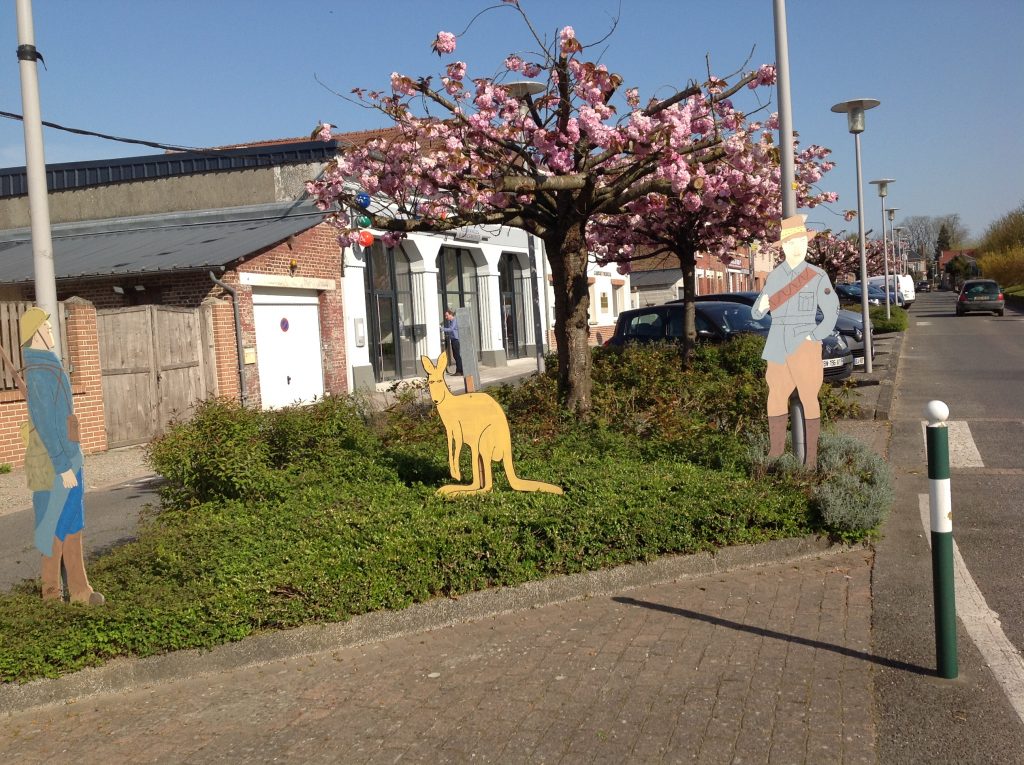Anzac Day: Digging beneath the myth of the unruly Australian digger
Despite their reputation for being undisciplined and insubordinate, Australian soldiers who fought in World War I, known as ‘diggers', were fiercely courageous and disciplined where it mattered – on the battlefield. These rebels with a cause would play a pivotal role in defining modern Australian identity.

Thursday 25 April 2019
One doctrine has dominated military thinking for centuries: only well-trained and disciplined soldiers win wars. That explains why when word reached the top brass in London of unruly and, God forbid, unshaven Australian soldiers (‘diggers') on the battlefields of Gallipoli, an investigation was launched.
Sir Maurice Hankey, the War Cabinet's Secretary, visited the front line in Turkey and reported to then Prime Minister Herbert Henry Asquith: “I do hope that we shall hear no more of the ‘indiscipline' of these extraordinary Corps, for I don't believe that for military qualities of every kind their equal exists. Their physique is wonderful and their intelligence of a high order.”
Field Marshal Douglas Haig once wrote in his diary that the Australians were “very hard and determined-looking … and mad keen to kill Germans, and to start doing it at once!”
But despite reports of the incredible bravery exhibited by Australians dispatched to key battles of the war including Pozières, Fromelles, Péronne, Ypres and, of course, Villers-Bretonneaux, the Diggers never shook off their reputation as mischief-makers.
Hard-earned reputation
When it came down to it, the War Cabinet put up with a lot of this ‘indiscipline', provided the Australians got the job done. Recapturing Villers-Bretonneux was just one example of this unpredictable brand of what war historian Rob Roggenberg calls “collective discipline ‘and' individualism” to achieve their objective.
This idea of collective individualism is echoed in a Bartleby essay on the importance of military discipline and values: “Discipline is created within a unit by instilling a sense of confidence and responsibility in each individual.”
The ‘troublemaker' moniker was not confined to rank and file soldiers either. According to records, Australian Brigadier-General Thomas William Glasgow demonstrated his own version of irreverence towards British command when his battalion was ordered to attack Villers-Bretonneux from a vulnerable position. Fearing too many lives would be lost, Glasgow famously replied: ”Tell us what you want us to do … but you must let us do it our own way.”
While the Diggers on-field antics seemed to be tacitly tolerated, a much shorter leash existed behind the lines, and for good reason. Right up until February 1918, according to Roggenberg, Haig noted that the Diggers were still proving to be a handful: “We have had to separate [them] into Convalescent Camps of their own, because they were giving so much trouble when along with our men and put such revolutionary ideas into their heads.”
Nine in every 1,000 Australian soldiers in the European theatre languished in military prison in 1918. That was nearly six times more than the average for Canadians, New Zealanders and South Africans – so generally wild colonial exuberance was no excuse for the Australian misbehaviour. Haig was prepared to admit that the off-field trouble probably flowed from the low standard of discipline throughout the Australian divisions.
Bravery under fire
What British command had long failed to understand was that individual fighting spirit combined with bravery could coalesce into a collective sense of purpose – driven by mateship not military protocol.
But by the closing chapters of World War I, it could be argued that traditional rank and file doctrines of decorum were blurring. The two Battles of Villers-Bretonneux in northern France cemented the reputation of Australian soldiers as not only as individually brave under fire but also collectively disciplined when it counted most – in the heat of battle.
On 23 April 1918, Australian forces played an instrumental role in repelling the German Spring Offensive which was using Villers-Bretonneux (and its strategic location just south of the River Somme) as a springboard to the nearby cathedral town of Amiens.

During the night of 24 April, a systematic counter-attack by Australian and British brigades had Villers-Bretonneux partly surrounded to the north and south. By the morning of 25 April, exactly three years after the Anzac landings at Gallipoli, French and Australian flags were raised over the town, and remain there to this day.
In just a few days of the fiercest fighting, the Australian, British and French (including Moroccan) troops had almost completely restored the original front line after the First Battle of the Somme and, arguably, turned the tide on the First World War. The now famous battle is also the first on record in which tanks fought against each other.
Australian soldiers certainly distinguished themselves at Villers-Bretonneux on Anzac Day, says Lydie Vandepitte of Somme Tourism in Amiens, but their involvement in the Great War was much more than a single battle. It was a founding element in the story of this young nation exerting its independence from Britain, she adds.
But the Diggers extreme bravery came at a huge cost, according to the Department of Veterans' Affairs. Some 2,400 Australians died in the effort to recapture Villers-Bretonneux in April 2018, half of them in that one fateful night.
Their sacrifice is commemorated in the Australian National Memorial outside town where the heaviest fighting took place, and in the continuing gratitude of the townspeople who pay tribute alongside Australian officials and pilgrims at the annual Anzac Day memorial celebrations on 25 April.
“Do not forget Australia”
The Australian National Memorial stands on the grounds of a vast military cemetery honouring Australian soldiers who fought bravely in France and Belgium during the First World War. Nestled into the rear of the site is the imposing central tower offering panoramic views of the surrounding countryside, where the Allies battled to retake control of the Somme from the Germans. A memorial wall commemorates the 10,732 Australian casualties who died in France and who have no known grave. Also on the site is the Sir John Monash Centre, which uses multimedia wizardry to present the Diggers' side of the story on the Western Front as part of a dedicated Remembrance Trail 1914-2018. In just nine months since opening in April 2018, nearly 48,700 have visited the Centre alone.

“The relationship between Australia and the Somme will forever be strong and eternal,” says Vandepitte, which together with the Amiens Tourist Board host upwards of 25,000 Australians during Anzac Week, and scores more across WWI memorial sites (second only to British visitors in terms of total numbers each year).
“In fact, cities and small towns across Australia, such as Amiens and Pozières in Queensland, Hamel in Western Australia, Pèronne in Victoria, bear the name of places in the Somme region,” she noted.
Back in Villers-Bretonneux, the local Franco-Australian museum on the grounds of the Victoria School, which was rebuilt and named thanks to donations from schools in the state of Victoria, has a rich collection of original WWI artefacts shipped back to France (free of charge by QANTAS) after a nationwide call. On classroom walls in the functioning school, inscriptions remind pupils of the enduring goodwill between the two countries: “Do not forget Australia.”


